
The Lighthouse Venice Beach: Warkentin Associates Transforms a Historic Post Office into a Bauhaus-Inspired Creative Campus
Words by Eric David
Location
Venice Beach, California, USA
The Lighthouse Venice Beach: Warkentin Associates Transforms a Historic Post Office into a Bauhaus-Inspired Creative Campus
Words by Eric David
Venice Beach, California, USA
Venice Beach, California, USA
Location
It speaks volumes about our present moment that the opening of The Lighthouse, a new creative campus for content creators and professionals in Los Angeles, makes a point of describing itself as an IRL (in-real-life) environment. In an age where much of our work, connection, and culture has migrated to the digital ether, the very act of gathering in a physical space has become not just a choice, but a statement. It’s almost a curious inversion: the virtual world is now the default, and the real world must be reasserted.
In this context, it’s particularly apt that Warkentin Associates, the design studio behind the project, turned to the Bauhaus as a guiding influence. The pioneering 20th-century movement championed the power of space, interdisciplinarity, and communal creativity, seeking not merely to unite form and function but to reimagine how we live and work together; it’s an ethos that feels newly urgent in our fragmented, hyper-connected era.
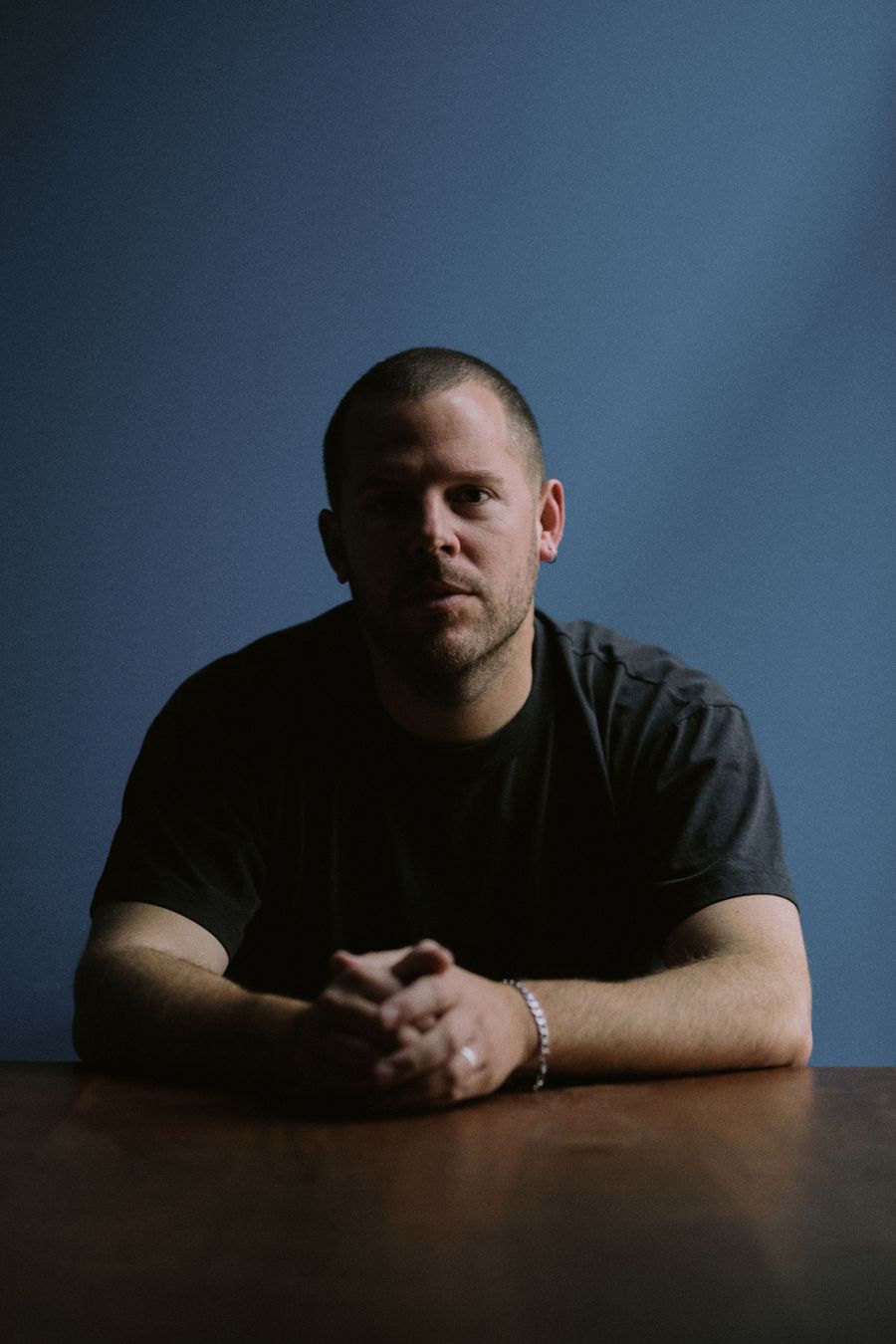
Designer Nathan Warkentin. Photography by Anna Arnet.

Photography by Yoshihiro Makino.
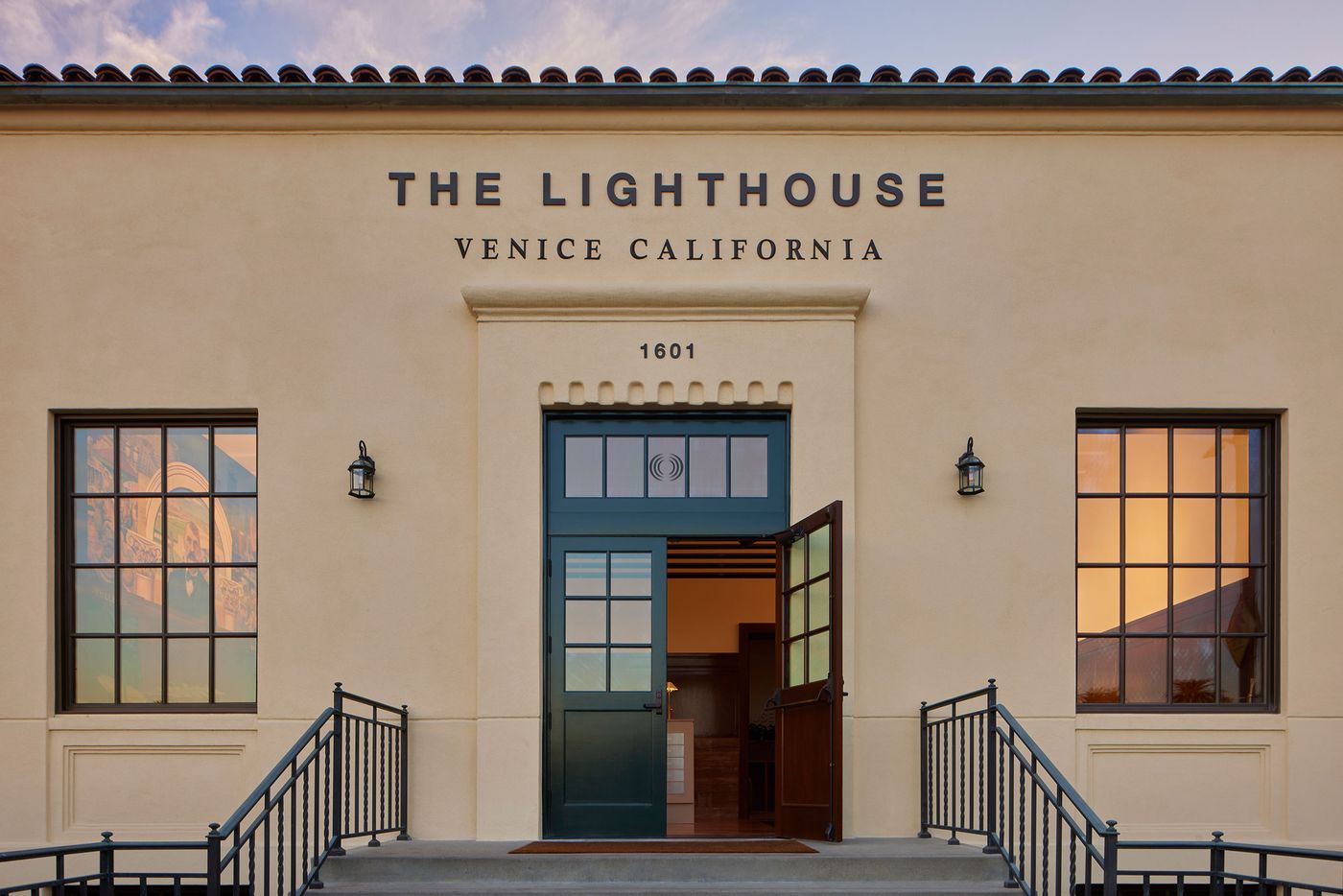
Photography by Yoshihiro Makino.
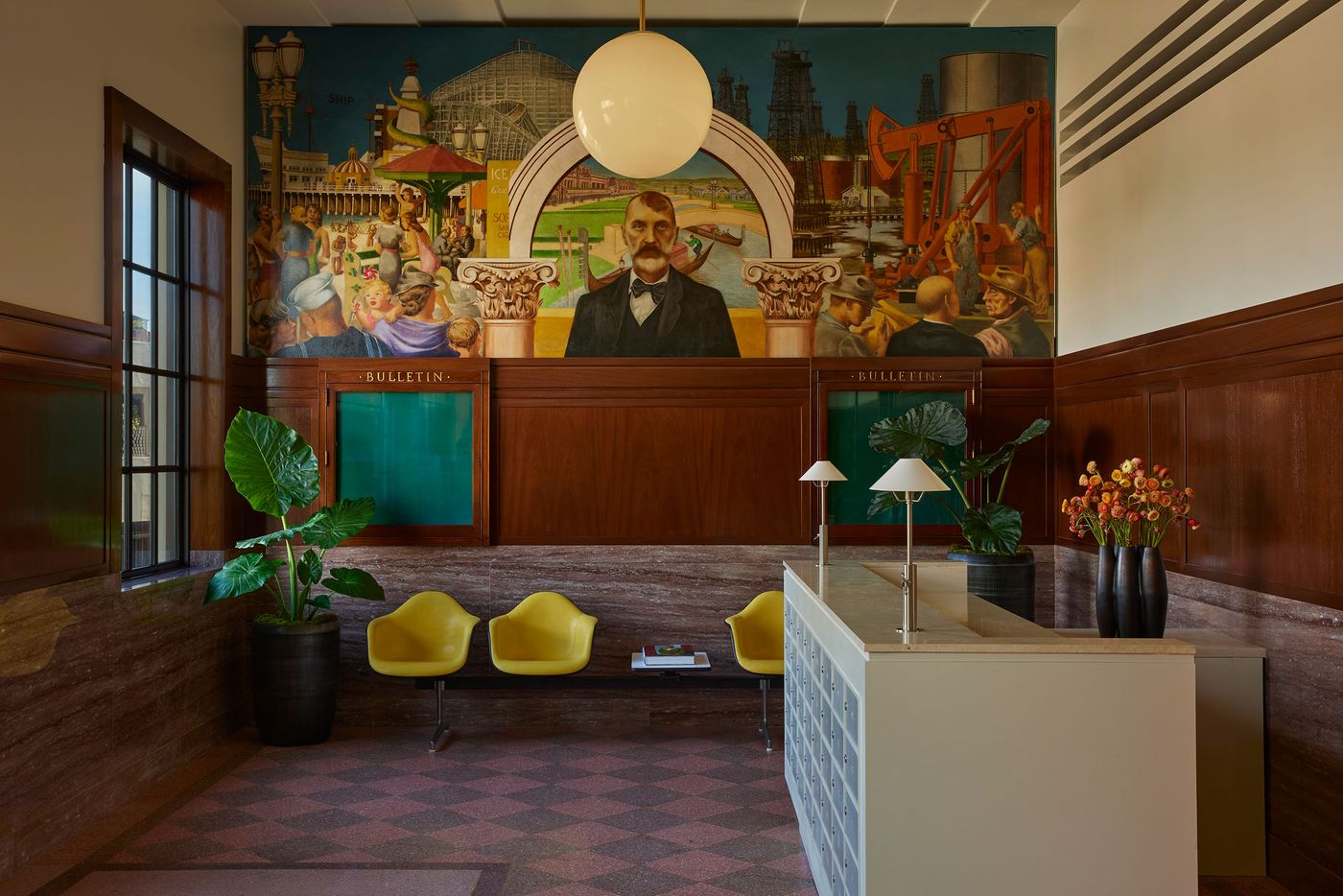
The lobby featuring Edward Biberman’s monumental 1941 mural "Abbot Kinney and the Story of Venice". Photography by Yoshihiro Makino.
Sitting just a block from the Venice Beach Boardwalk, The Lighthouse occupies the historic Venice Post Office, a 1939 landmark built under the Works Progress Administration during the Great Depression, now reborn as a new kind of communications hub; one that transmits ideas, culture, and creativity rather than just mail. Designed to blur the boundaries between workplace, hospitality, and home, the 2,090-square-metre campus is divided between a bright, open-plan ground floor and a darker, more industrial basement level, each tailored to different stages of the creative process.
Upstairs, you’ll find a sun-drenched café, open-plan workspaces, private offices, and a 72-seat theatre, interspersed with several “living rooms”, informal lounge areas inviting spontaneous encounters. Downstairs, it’s all production: podcast booths, photo studios, music suites, and a test kitchen cater to content makers of every stripe.

Photography by Yoshihiro Makino.
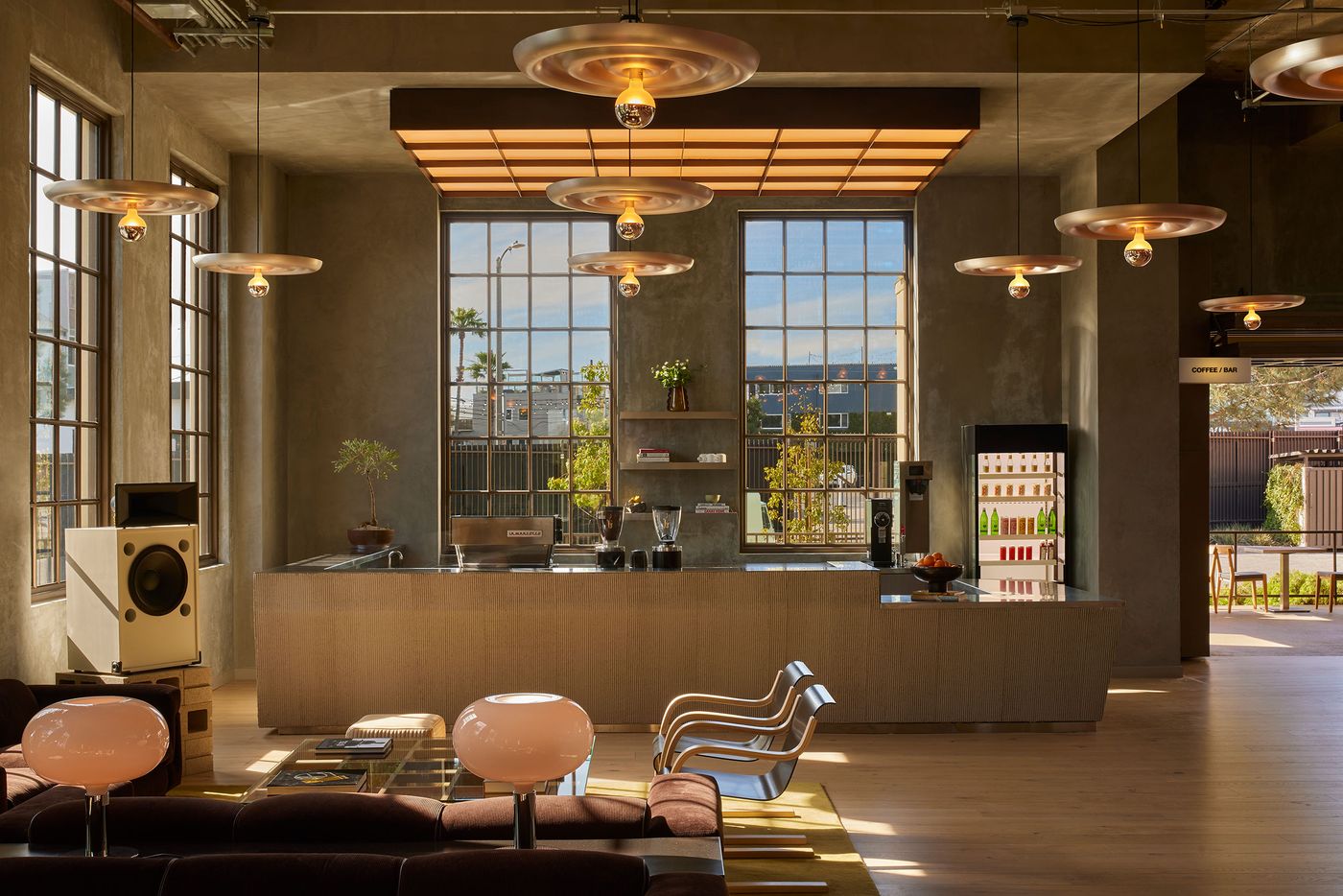
Photography by Yoshihiro Makino.

Photography by Yoshihiro Makino.
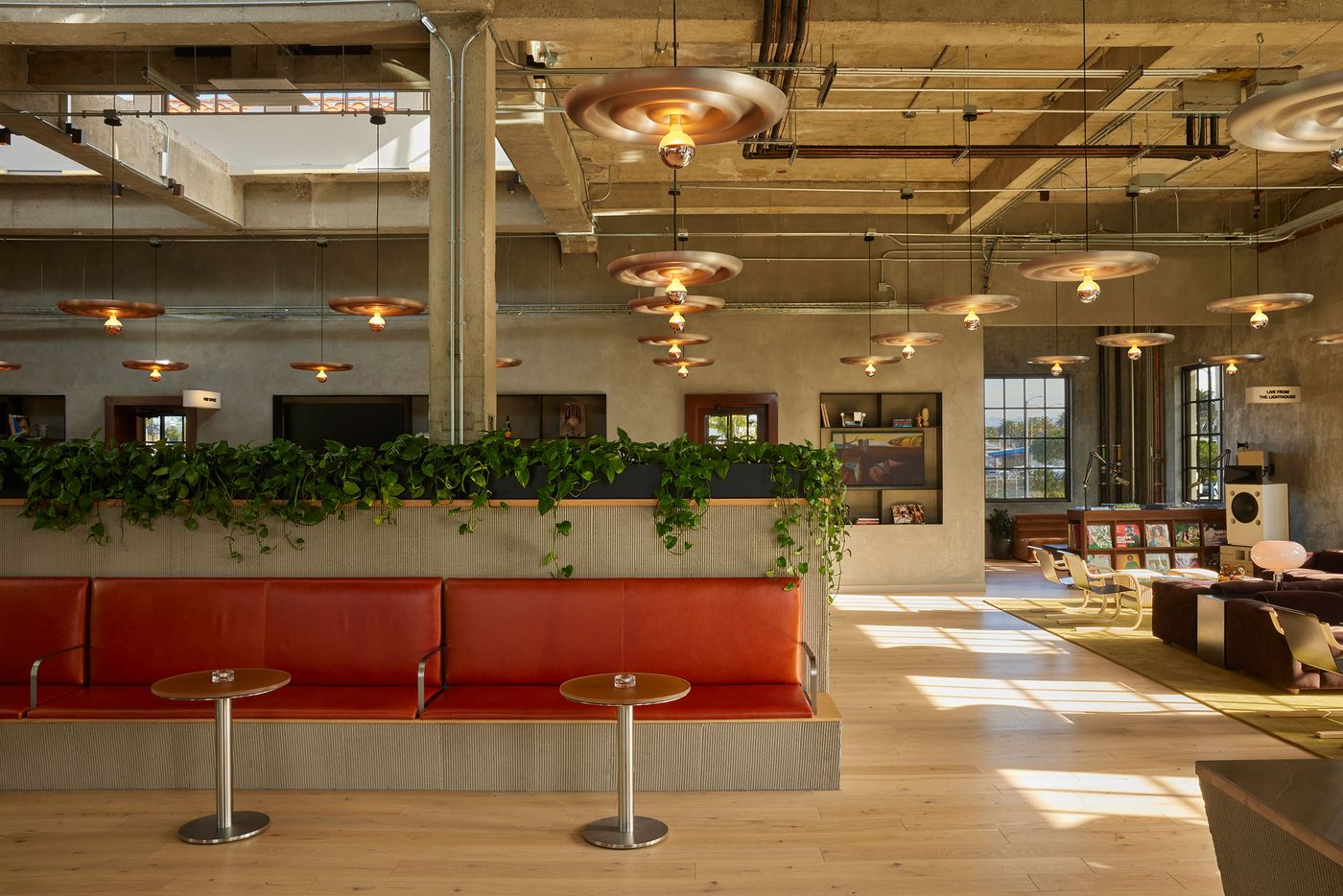
Photography by Yoshihiro Makino.
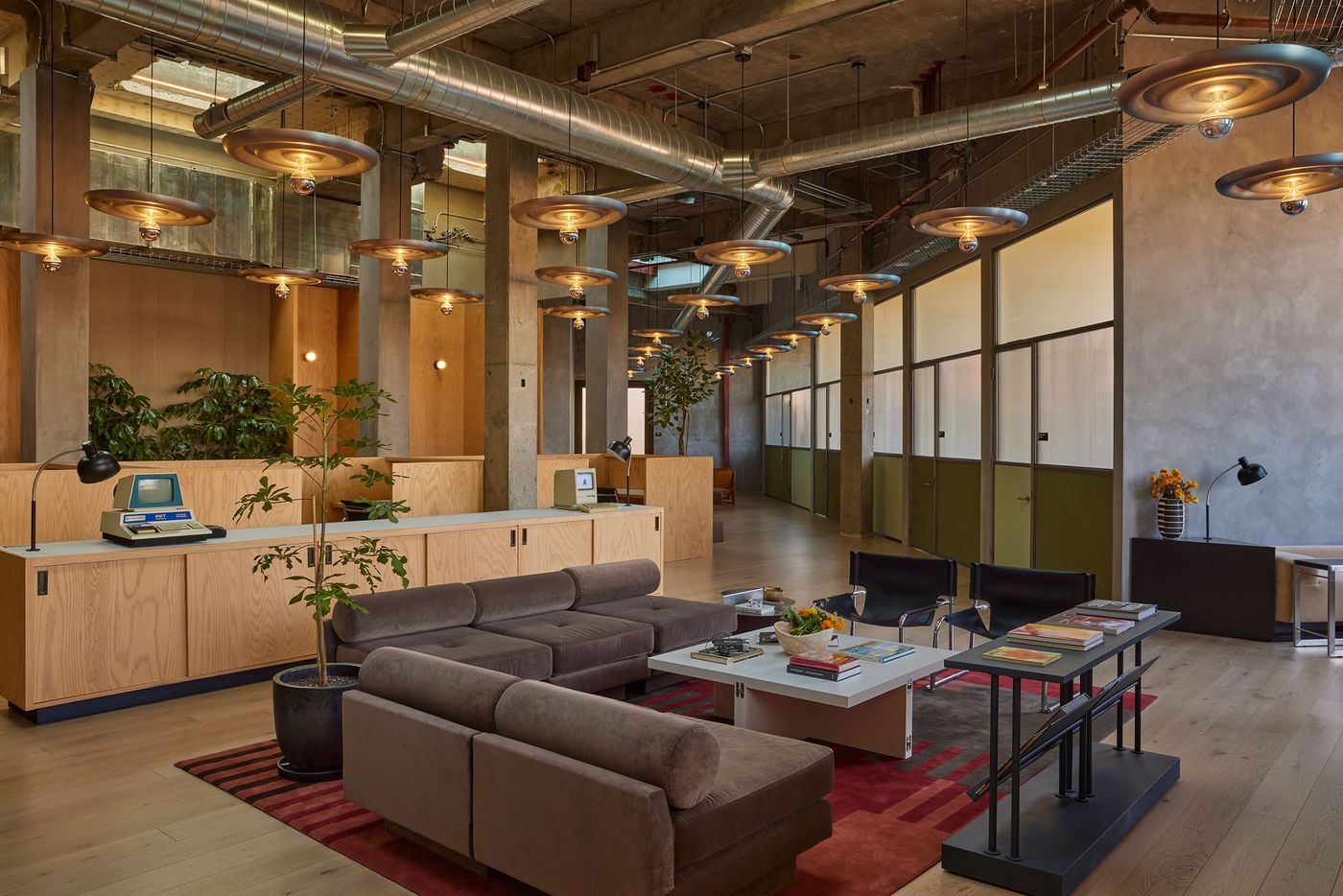
Photography by Yoshihiro Makino.
Design-wise, the venue strikes a masterful balance between mid-century modern elegance and industrial rawness. Exposed concrete beams and columns are offset by a tactile raked plaster finish that sweeps across many of the walls, a subtle yet evocative texture inspired by Paul Rudolph’s iconic work on the Yale Art & Architecture Building, one of the earliest and most influential examples of American Brutalism. This richly textured backdrop is softened by warm timber flooring and grounded by visible ductwork and cabling that enhance the scheme’s unapologetically industrial vibes. “Our selection of simple, industrial materials, like steel, glass, and concrete, aligns with the Bauhaus principle of 'truth to materials,’” notes Nathan Warkentin, founder of Warkentin Associates.

Photography by Yoshihiro Makino.
Custom-designed furniture and a curated mix of classic pieces from Artek, Vitra, Herman Miller, and others imbue the space with a refined yet unfussy sophistication. Lighting also plays a defining role in the overall ambiance, with spun aluminium disc pendants, designed by Warkentin Associates as playful nods to Achille Castiglioni, cast gentle pools of light that elevate the interiors without overpowering them.
Throughout the premises, references are layered with intention, never overplayed. The open library and workspace take cues from Japanese libraries, specifically Arata Isozaki’s Oita Prefectural Library, favouring fluid transitions and a sense of quiet openness over traditional segmentation. Meanwhile, the restored lobby reclaims its historic gravitas with the return of Edward Biberman’s monumental 1941 mural, Abbot Kinney and the Story of Venice, a WPA-era artwork that once again anchors the space in its civic past. The result is a space that feels rigorously composed yet effortlessly inviting where creators can effortlessly oscillate between analogue and digital environments.
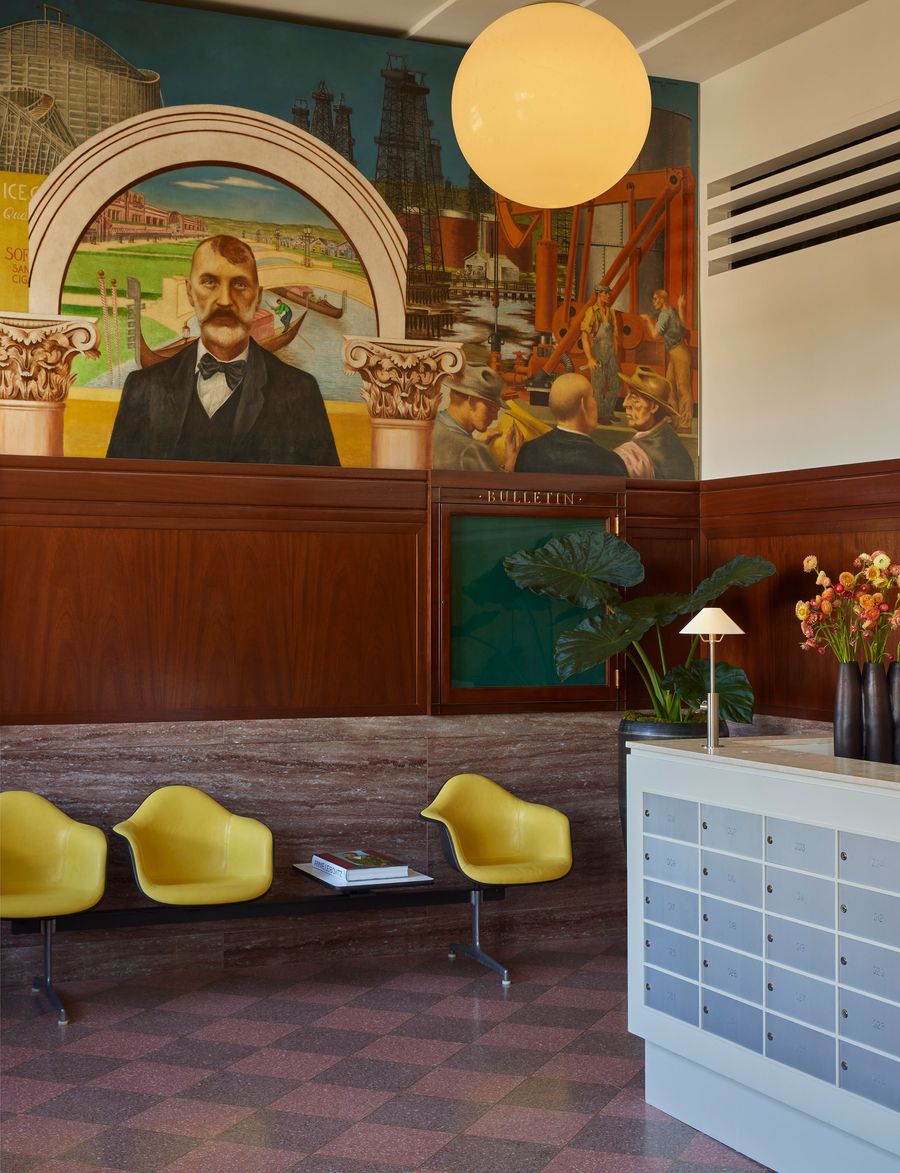
The lobby featuring Edward Biberman’s monumental 1941 mural "Abbot Kinney and the Story of Venice". Photography by Yoshihiro Makino.

Photography by Yoshihiro Makino.

Photography by Yoshihiro Makino.
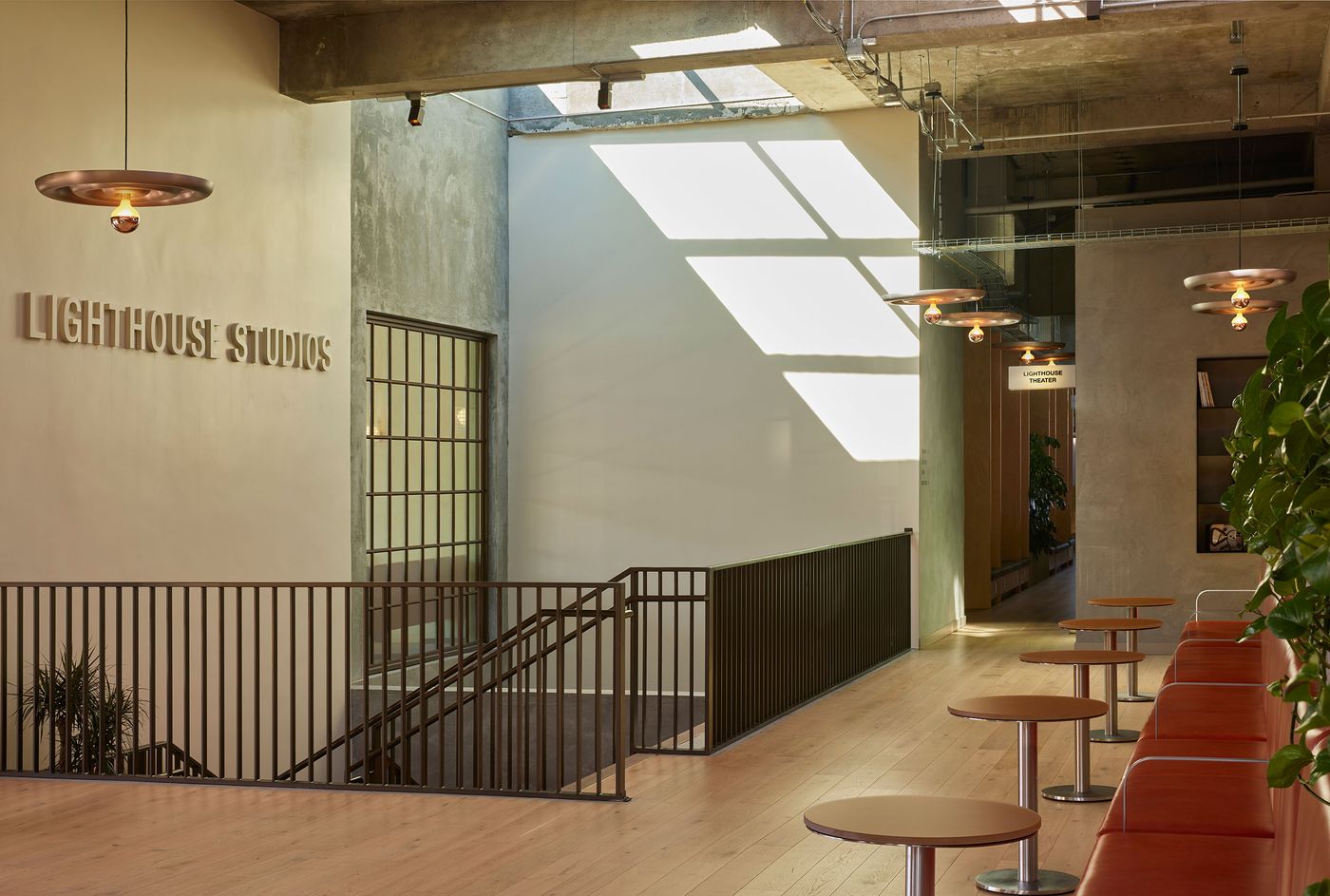
Photography by Yoshihiro Makino.
In a world increasingly governed by screens and streams, The Lighthouse makes a compelling case for the enduring magic of physical places. With a Brooklyn outpost set to open in the historic 1866 Pencil Factory in Greenpoint later this year, and a London campus planned for 2026, its core belief—that creativity thrives in shared, real-world environments—looks poised to resonate across continents.
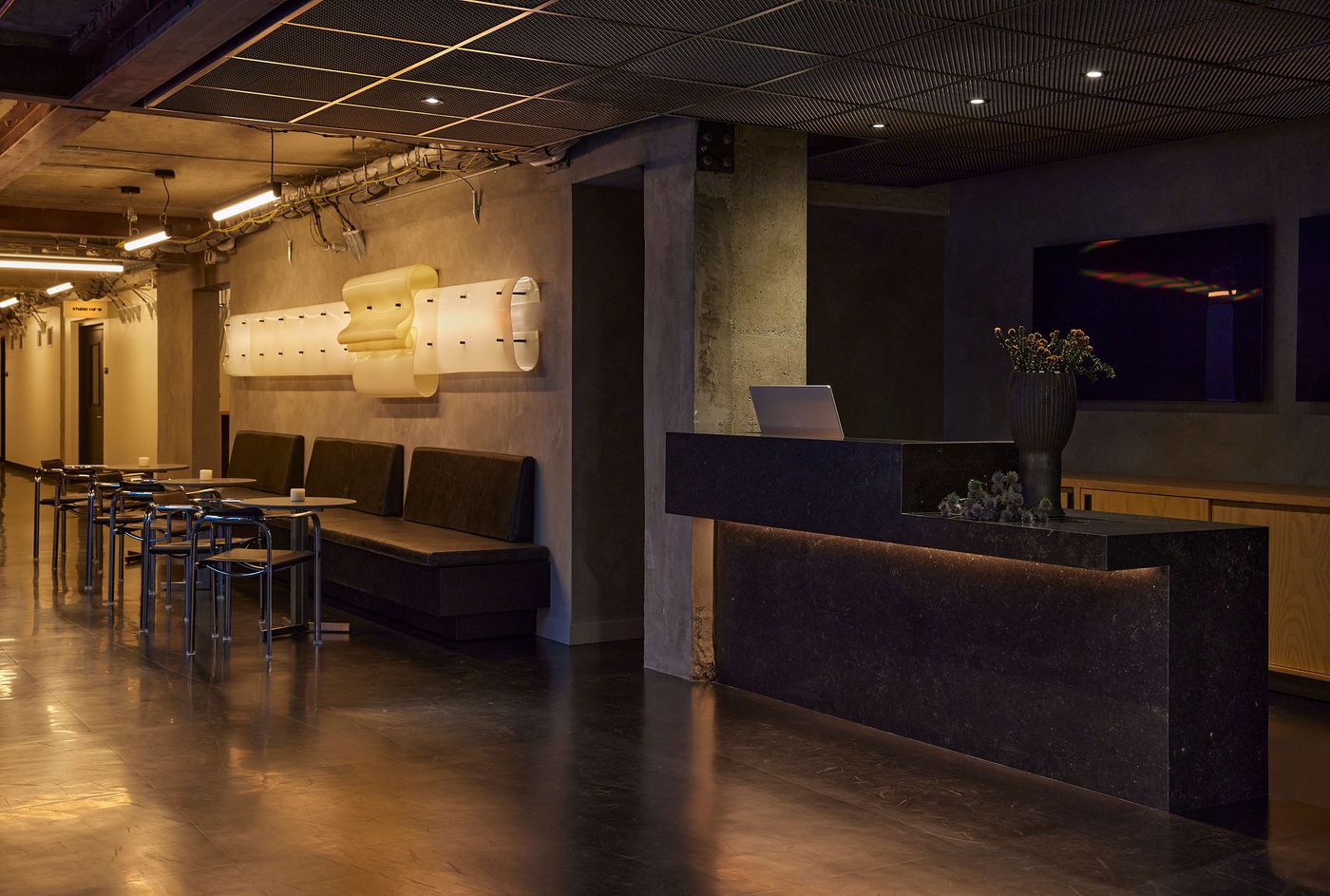
Photography by Yoshihiro Makino.
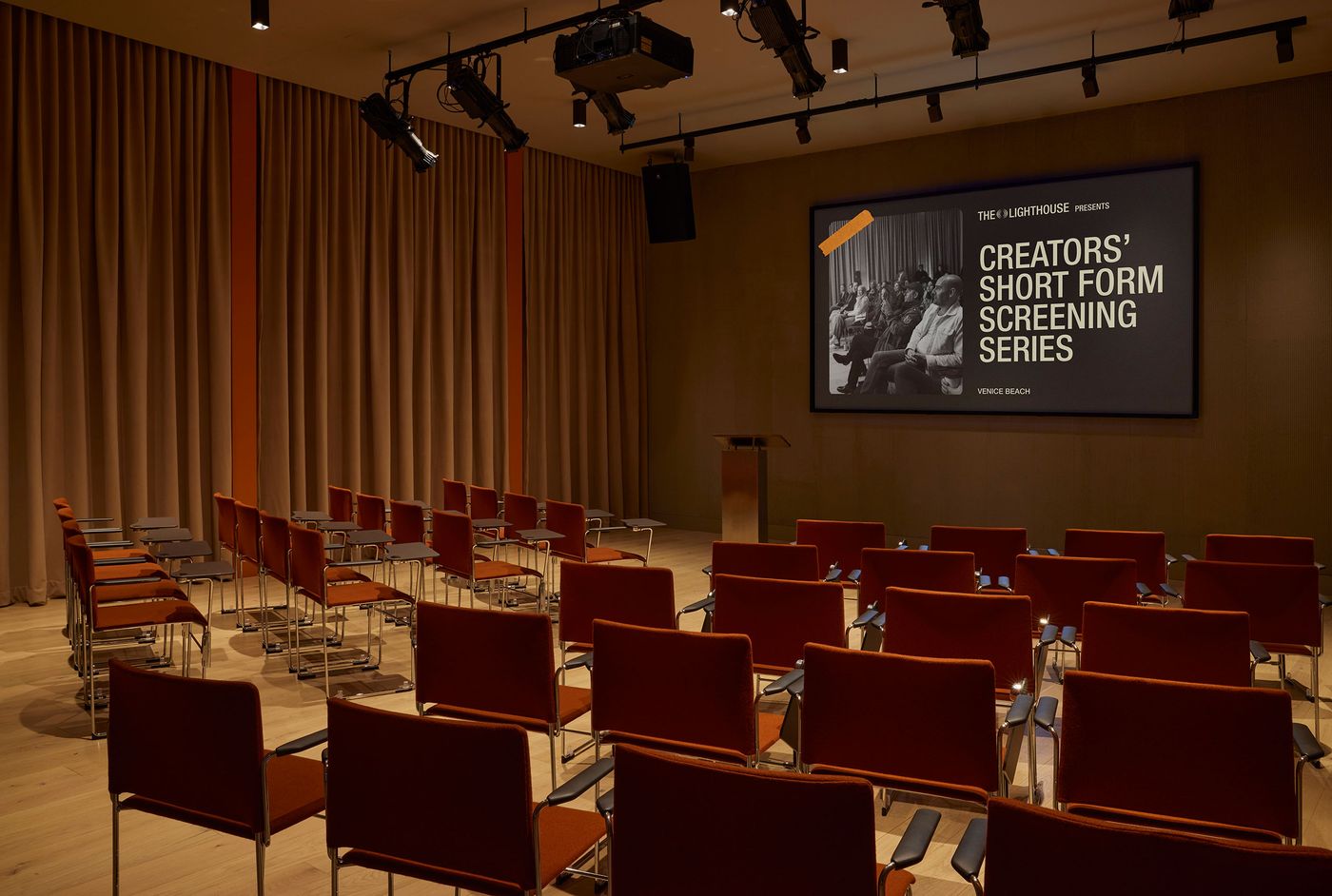
Photography by Yoshihiro Makino.
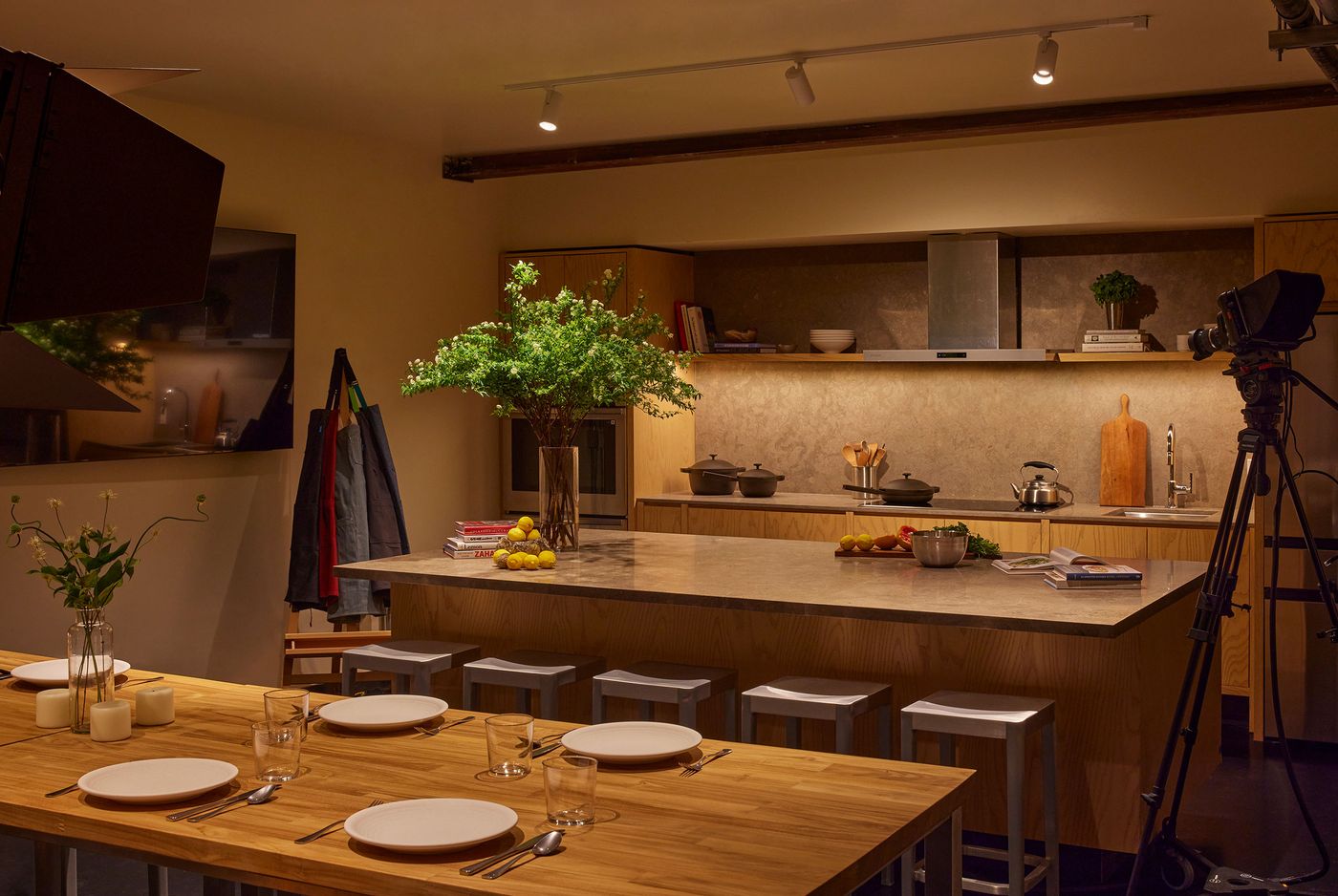
Photography by Yoshihiro Makino.
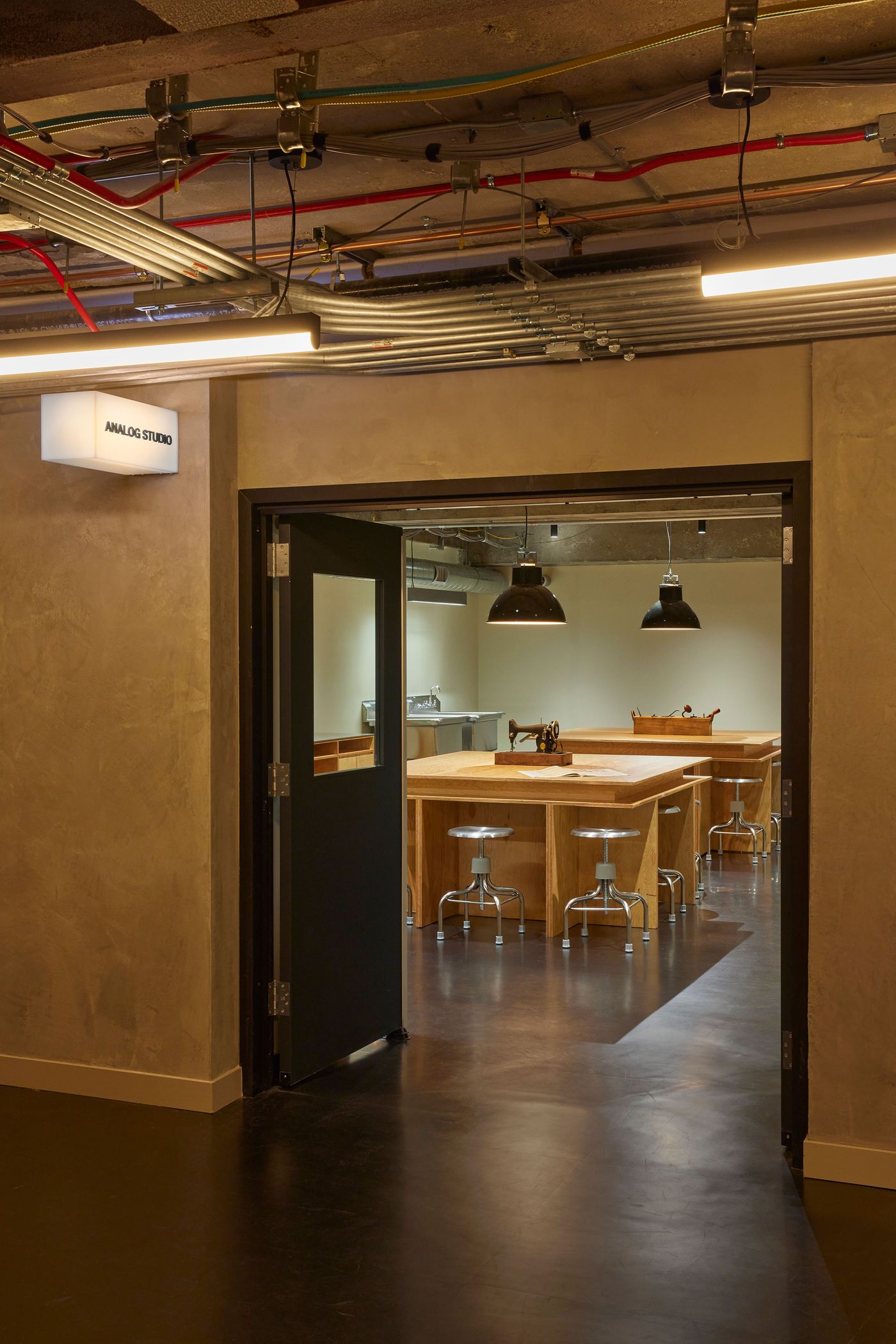
Photography by Yoshihiro Makino.